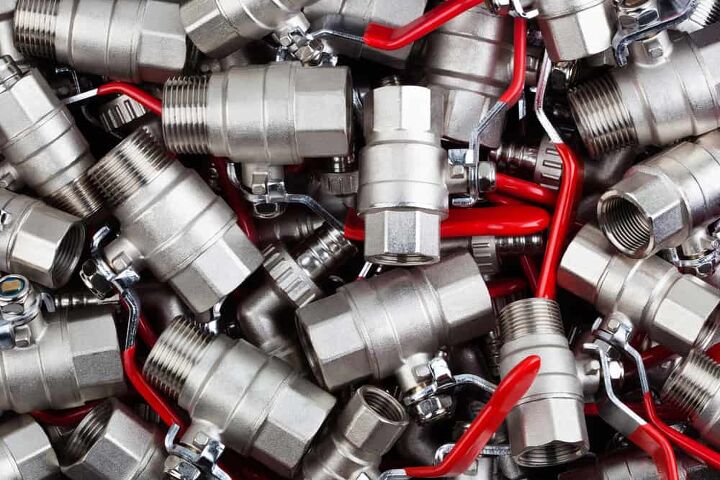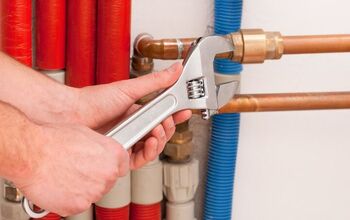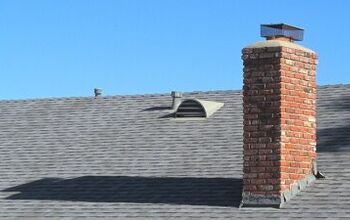Ball Valve Leaking Internally? (Possible Causes and Fixes)

Ball valves play a vital role within a plumbing system, stopping the flow of water with a quick twist. These quarter-turn valves allow you to stop and start the water flow by simply operating a handle from the outside. Some of the most common ball valves in use are PVC, but they also come in stainless steel, brass, etc.
Ball valves come in handy when you’re experiencing a leak, enabling you to stop the flow of water quickly. However, wear-and-tear, dirt or other obstructions, or a damaged seal or valve can cause the ball valve to leak internally. You might be able to fix the issue by replacing the packing washer; otherwise, you’ll likely need a new valve.
A leaky ball valve won’t operate properly, which can be a bothersome nuisance. Plus, any time you have to deal with a leak, it can cause headaches and potentially lead to larger issues. Luckily, you can try a few DIY repairs to tackle the problem, or ultimately, you might need a new valve.
Do You Need to Hire a Plumber?
Get free, zero-commitment quotes from pro contractors near you.

How Does a Ball Valve Work?
A ball valve is a type of quarter-turn valve where a ball sits in a passageway. When liquid flows through the passageway, the ball has a hole, which the valve opens and closes.
When the ball’s position places the hole running in the same direction as the passageway, fluid flows through it. Conversely, when the hole is perpendicular to the passageway, fluid can’t pass through, the valve is closed. You control the valve from the outside with a handle, turning it to open and close the valve.
Types of Ball Valves
Ball valves are one of the most commonly used PVC valves in plumbing. They are popular in many applications because they are easy to work with, and you can use them in several applications. There are two common types of ball valves: compact ball valves and true union ball valves.
Compact ball valves are one-piece ball valves manufactured with glue or threaded ends. You’ll typically find true union ball valves mostly in industrial applications. True union ball valves come with union ends in either socket or threaded type connections making them easy to repair.
Manufacturers test ball valves to verify they can handle 150 PSI of liquid-based pressure. In addition, they can tolerate temperatures up to 140 degrees Fahrenheit for PVC or 200 degrees Fahrenheit for CPVC.
Reasons a Ball Valve Leaks Internally
Ball valves can leak for a variety of reasons. For example, if you can’t fully close the valve due to debris, it can cause leakage. Leaking can also occur due to a damaged seal or valve.
If the ball valve is leaking during construction, this could be why.
- Improper transportation or hoisting damage to the integral valve can lead to the ball valve leaking internally.
- If the ball valve is not dry before leaving the factory, the sealing surface can corrode with rust and leak.
- If the safeguard is not implemented correctly at the construction site, rainwater and debris can get into the valve, causing leakage.
- If no grease is injected into the valve seat during installation, impurities can enter the valve seat, causing internal leakage.
- If the valve is not in the full open position when installed and welded, this can damage the ball. If there is weld splatter in the switch, it will damage the valve seat, and this will form internal leaking.
- If the limit isn’t accurate during installation or the stem’s drive is misaligned, the valve will leak.
If the ball valve is leaking during construction, this could be why.
- If you don’t maintain the ball valve properly, the ball valve may leak internally.
- During normal operation, construction residue can scratch the sealing surface, causing internal leakage.
- If you don’t use the ball for a long period, the valve seat and the ball will lock. This damages the sealing surface when opening and closing the valve and forms internal leakage.
- If the ball valve is tilting two to three degrees, this can result in internal leakage.
How to Repair a PVC Ball Valve
A PVC ball valve has a spherical disc that controls the flow of water or air through it. A ball valve is an integral part of the plumbing system as it can shut off during emergencies. While the ball valve is extremely useful, it is not immune to everyday wear and tear or damage.
You only need basic plumbing knowledge to repair a PVC ball valve. Follow the steps below to fix a PVC ball valve.
Tools You Will Need:
- Screw
- Screwdriver
- Allen wrench
- Replacement parts
- Lubricating oil or petroleum jelly
- Dry cloth or sponge
Step 1: Turn Off the Water Supply
First, turn off the water supply so that the flow of water doesn’t interrupt the job during the ball valve repair. Once you shut off the valve, drain any excess water into a bucket, then wipe the valve dry.
Remove the handle that holds the PVC ball valve together. Use an Allen wrench or screwdriver to remove the screws that hold the valve together, then remove the ball valve.
Step 2: Disassemble the Ball Valve
To discover the problem, disable the whole valve to examine each part and check for any worn or damaged parts. You can find replacement kits for PVC ball valves at most hardware and home improvement stores. Make sure that you keep all screws and parts together so that you can put the valve back together easily.
Step 3: Replace Worn Parts of the Ball Valve
Once you have located the worn or damaged part of the ball valve, replace the damaged part. Before reassembling the ball valve, apply lubricating oil or petroleum jelly to the valve to facilitate the replacement parts. Then, to reassemble, do what you did to disassemble in the reverse order.
Secure parts with the screw before you test for any leaks by turning on the main line of the plumbing system. Then, check to see if the PVC ball valve is still leaking.
How to Replace a Ball Valve
While you can repair a single part of a ball valve, sometimes you have to replace it entirely.
Follow the steps below to replace a ball valve.
Step 1: Buy a New Ball Valve
Before beginning the project, buy a new ball valve. If your pipe is copper, you will need to use plumber’s tape or sweat pipe joints. PVC pipes can use pipe cement to hold them in place.
Step 2: Turn Off the Water Supply
Shut off the water supply to the pipes you will be working on, then turn on the faucet to release water.
Step 3: Access the Pipes
You can access sink pipes underneath the sink, but you’ll need to cut the wall to access bathtub faucet or shower pipes.
Step 4: Remove the Old Ball Valve
Once you have access to the pipes, use a hacksaw to cut the pipe to remove the older ball inside of it. Next, remove the old valve via the two cuts that you made.
Step 5: Splice the Pipe
Using the new pipe section, splice it onto the pipe that you cut and allow enough width to fit the ball valve. Place one end of the spliced pipe into the coupler.
Step 6: Put In the New Ball Valve
Put in the new ball valve by following the directions on the package. Remember, the copper pipes need sweat joints and plumber’s cement. After you’ve secured the valve, you can close the pipe with the coupler.
Step 7: Test the New Ball Valve
To test the new ball valve, turn the water back, then turn on the faucets. Check for leaks before closing the wall where you accessed the pipes.
Do You Need to Hire a Plumber?
Get free, zero-commitment quotes from pro contractors near you.

Related Questions
What are the differences between a globe valve and a ball valve?
The main difference between a globe valve and a ball valve is the way that they close. A globe valve uses a plug, or stem, that closes against the flow. A ball valve has a gate, or ball, that closes across the flow. Globe valves are good options for regulating the flow of liquid. Ball valves are good options for on and off controls without causing a pressure drop.
How much would it cost to have a plumber replace a ball valve?
To have a plumber replace a ball valve typically costs $175 to $250. Most of the price is for labor as the materials are typically under $25. The ball valve replacement price will depend on the job size, conditions, and finish options that you choose.
What is the average lifespan of a ball valve?
The average life expectancy of a ball valve is eight to ten years. However, ball valves typically give out due to wear and tear because of the constant use by its rotation operation. Typically, the rotation is a ¼-turn from the horizontally mounted handle.

Stacy Randall is a wife, mother, and freelance writer from NOLA that has always had a love for DIY projects, home organization, and making spaces beautiful. Together with her husband, she has been spending the last several years lovingly renovating her grandparent's former home, making it their own and learning a lot about life along the way.
More by Stacy Randall



























